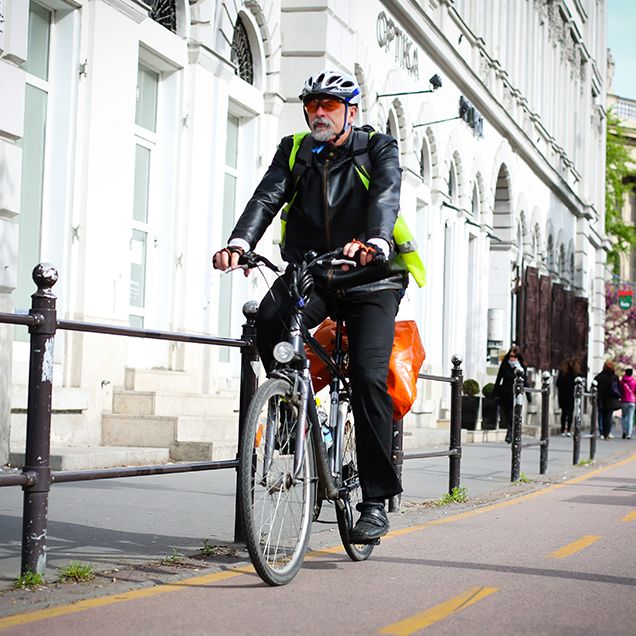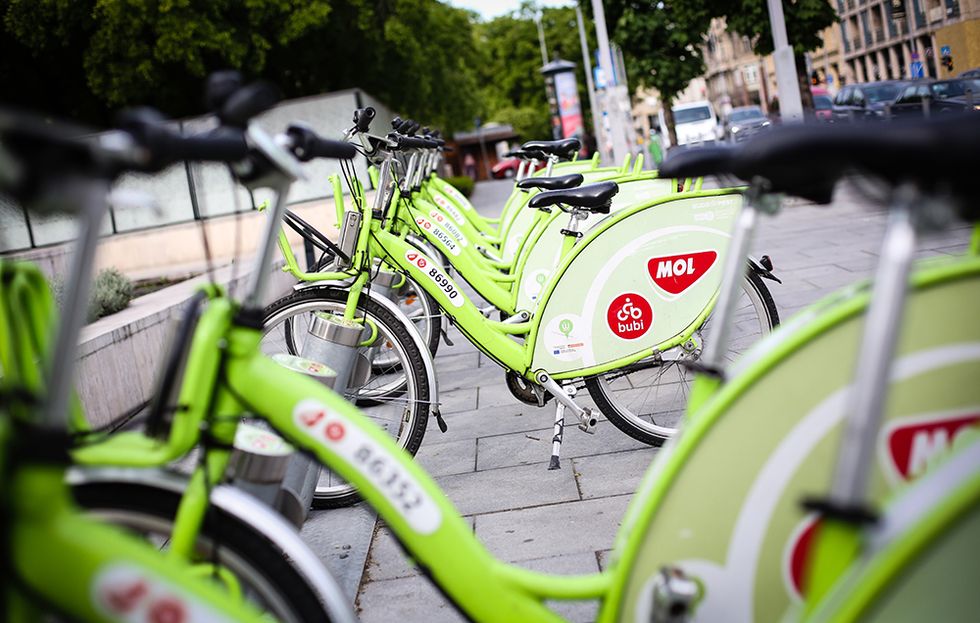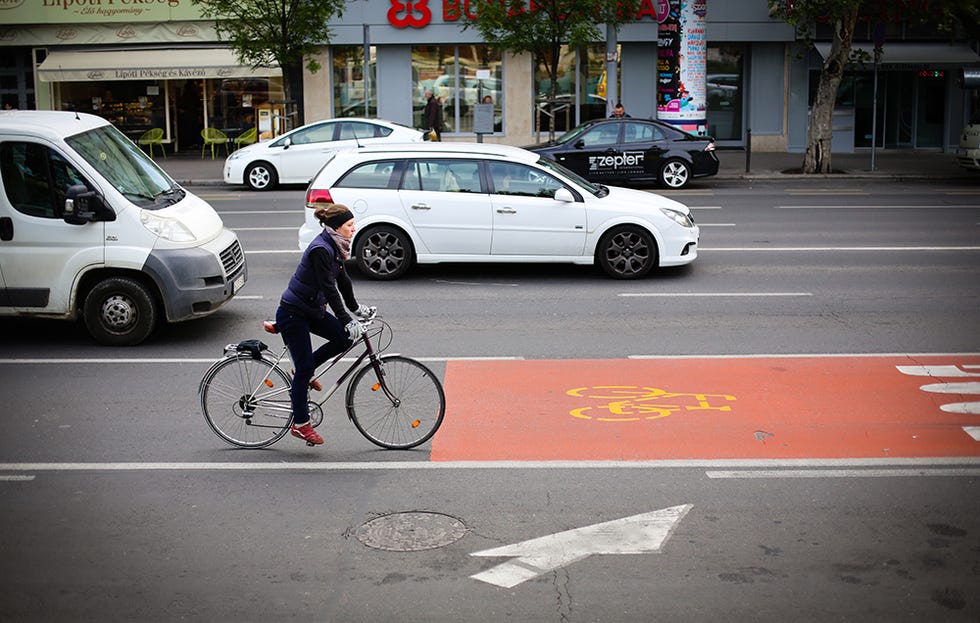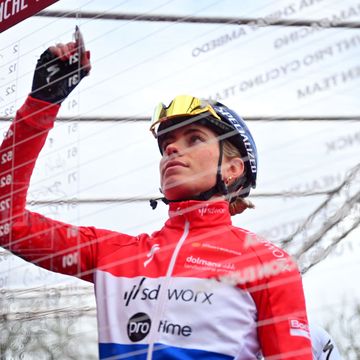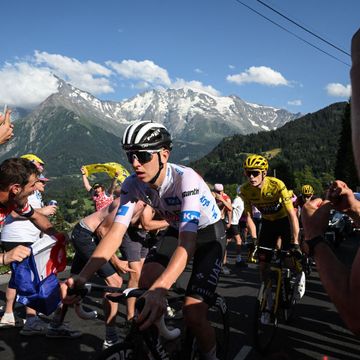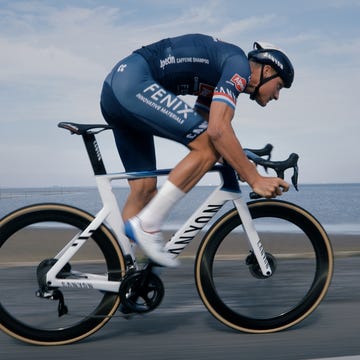Ask for an example of a bike-friendly European city, and most riders will likely suggest Copenhagen or Amsterdam as top destinations. But Budapest, the quaint and quirky capital of Hungary, is constantly popping up on “must-visit” lists for Europe this summer, and its cycling community is worth noting as well. With its robust commuter scene aided by a booming bike share system, ample hilly trails for mountain biking, and a scenic route along the Danube, the second-longest river in Europe, it’s no wonder Budapest easily draws bike lovers from across Eastern Europe and beyond. Here are four reasons you should add Budapest to your cycling bucket list.
RELATED: 10 Awesome International Bike-Friendly Cities You Need to Visit
Choose your terrain: hilly trails in Buda, city streets in Pest
The Danube splits the city between bustling, hip Pest’s mostly flat terrain to the east, and the more refined and suburban Buda side’s winding hills to the west. If you’re up for a rewarding challenge, climb Buda’s 526-meter Janos Hill, which ends at one of the best views of the city from above, or ride farther into the green hills for an MTB adventure. For those more interested in hitting as many tourist sites and hotspots as possible on flat city streets, Pest is dotted with outdoor cafes, restaurants, and the ever-popular ‘ruin cafés’—hangouts retrofitted from abandoned and derelict buildings.
Roll around in style on MOL bubi Bikes
Commute like a local across Budapest’s approximately 200 kilometers of bike lanes and path on a lime-green bike from MOL bubi, the city’s first bike share. Twenty-four hours on wheels costs 500 HUF (about $1.81), and longer-term visitors can use a bubi bike for three days for $3.63 or $7.27 for one week of rides. The sturdy 55-pound bikes have three gears, adjustable seatposts, automatic lights front and rear, and frame-mounted storage space for holding maps and other small items. The area's 98 docking stations are usually no more than a third of a mile apart, and conveniently located near major hubs and tourist sites.
The MOL bubi program has grown increasingly popular since it launched in September 2014; fourteen months in, its 1,150 bikes had already seen more than 1 million uses, according to the Hungarian Tourist Board.
“It’s easy to use, it’s fun, and it looks quite good,” says Balazs Savor, who commutes to and from work in Budapest’s District V by bike when the weather gets warm.
As for bike commuting in general, Amos Hazelar—who rides his red Merida to and from his government administration job every morning on the Pest side of town—says cycling infrastructure is catching up to the needs of riders.
“There have been great developments in the past years,” he says of local routes. “Compared to [a decade ago], it’s much better to bike in Budapest now.”
Get roped into going chainless
If you want to be on the cutting edge of low-maintenance cycling tech, you’ll want to try Budapest-based Stringbike’s eponymous chainless bike. The Stringbike replaces traditional metal bike chains with the same strong, durable rope favored by rock climbers, to provide what it says is a smoother ride. The company offers private tours by Stringbike and showcases their rides at local races and events, where visitors can try out the “clean and graceful” bikes for themselves. Bonus: You can allegedly wash the ropes in a washing machine.
Follow the Danube through Central and Eastern Europe
The EuroVelo6, or the Rivers Route, spans more than 2,000 miles through 10 countries and is a favorite of tourists and locals alike. Riders can take the Danube Bike Path toward Western Europe through Bratislava and Vienna to Germany, or head east through Serbia toward the border separating Romania and Bulgaria. Total tallies on usage vary, but at least 40,000 cyclists are estimated to travel just the Austrian section of the course each year, mostly during the summer months. Riders can stick to the Slovakian side of the river or cross over to Hungarian side and pass through the city of Györ.
RELATED: 7 Places to Ride Before You Die
Savor, who favors the MOL bubi bikes in the city, frequently rides his Merida to and from Vienna each summer during vacation—summertime bike journeys along the Danube are “a very popular way to travel,” he says, and “a habit of many.”
